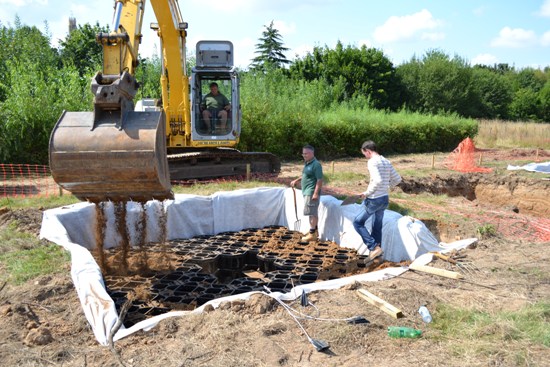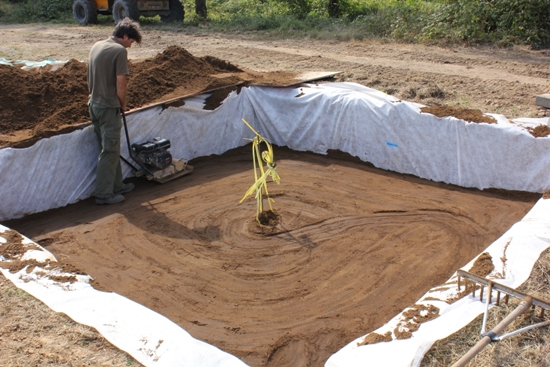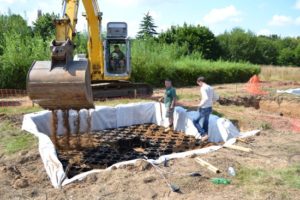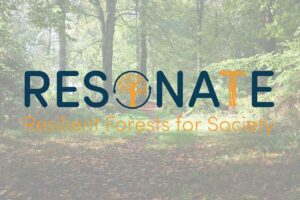Urban Tree Pit Comparative Study
The University of Greenwich are conducting an urban tree study to investigate different tree pit systems currently available in the marketplace, which provide suitable root volumes for the long-term success of trees in hard landscapes.
During the last two weeks of July, twelve tree pits were excavated and GreenBlue Urban’s Stratacell and Bourne Amenity’s Structural Tree Sand have been installed in six. This will be followed in mid-August by the installation of SilvaCell from Deeproot and Cornell University Structural Soil.

The first system installed was GreenBlue Urban’s Stratacell. This is a UK manufactured, 100% recycled, high-strength, open composite module which clips together to form a structural matrix of cells, able to support the high vertical and lateral loads created by engineered pavement systems. The system is filled with top soil to provide uncompacted rooting conditions beneath the hardscape above. The second system was Bourne Amenity’s Tree Sand. This product was used in the Olympic Park as part of the 2012 Olympics and transformation to Legacy works. Tree Sand was originally developed in Holland during the 1980s to provide suitable growing conditions for large trees in dense, urban areas whilst avoiding problems with compaction from engineered paved surfaces.

Thought for Long-term Requirements
Duncan Goodwin, Landscape Architect and University Senior Lecturer, who is leading the project, said:
“For trees to become functionally useful within our urban landscapes, they need to establish and reach a state of healthy, productive maturity.
“Unfortunately, tree planting is often seen as a piece of ‘window dressing’ to assist a design scheme through the planning process. With little thought about their long-term requirements, it is quite common for trees to be planted within insufficient rootable space. As a consequence, tree roots tend to explore moist and less compacted materials close to the surface and along utility excavations, disrupting paved surfaces and other infrastructure. This study investigates different tree pit systems currently available in the marketplace, which provide suitable root volumes to enable trees to be successfully planted and establish within our hard landscapes.”
The first product expected to be installed in mid-August will be the SilvaCell system, provided by Deeproot. This consists of a series of open, high-density plastic crates, topped with structural decks, which are able to support engineered pavements and vehicular loads. As with the Stratacell system above, the crates are filled with soil to provide the tree with an accessible root environment beneath the hard surface.
Tilia cordata ‘Greenspire’ trees, are to be planted in early December during National Tree Week.
For more information, please contact Duncal Goodwin, University of Greenwich.






